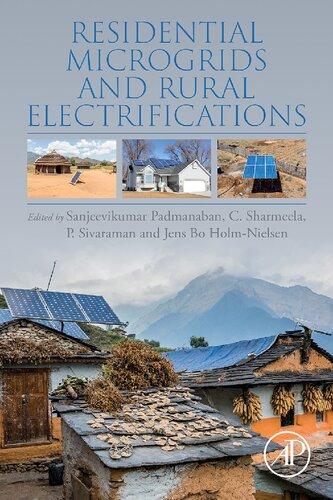
https://ebookmass.com/product/residential-microgrids-and-

Instant digital products (PDF, ePub, MOBI) ready for you
Download now and discover formats that fit your needs...
Active Electrical Distribution Network: Issues, Solution Techniques, and Applications Sanjeevikumar Padmanaban
https://ebookmass.com/product/active-electrical-distribution-networkissues-solution-techniques-and-applications-sanjeevikumar-padmanaban/
ebookmass.com
Artificial Intelligence-based Smart Power Systems 1st Edition Sanjeevikumar Padmanaban
https://ebookmass.com/product/artificial-intelligence-based-smartpower-systems-1st-edition-sanjeevikumar-padmanaban/
ebookmass.com
Microgrids Josep M. Guerrero
https://ebookmass.com/product/microgrids-josep-m-guerrero/
ebookmass.com
One Tiny On Dit Later (Singular Sensation Book 3) Sandra Sookoo
https://ebookmass.com/product/one-tiny-on-dit-later-singularsensation-book-3-sandra-sookoo/
ebookmass.com




https://ebookmass.com/product/financial-accounting-11th-editionpatricia-libby/
ebookmass.com
Non-Aligned Psychiatry in the Cold War : revolution, emancipation and re-imagining the human psyche Ana Anti■
https://ebookmass.com/product/non-aligned-psychiatry-in-the-cold-warrevolution-emancipation-and-re-imagining-the-human-psyche-ana-antic/
ebookmass.com
Never for Him (Hope Valley Book 12) Jessica Prince


https://ebookmass.com/product/never-for-him-hope-valleybook-12-jessica-prince/
ebookmass.com
A Relentless Rake Anna Harrington
https://ebookmass.com/product/a-relentless-rake-anna-harrington/
ebookmass.com
Savage Temptation : A Forced Proximity Italian Mafia Romance (Lords of The Commission - New York Book 1)
Stephanie Amaral
https://ebookmass.com/product/savage-temptation-a-forced-proximityitalian-mafia-romance-lords-of-the-commission-new-yorkbook-1-stephanie-amaral/
ebookmass.com



College Writing Skills with Readings, 11th Edition Zoe
Albright
https://ebookmass.com/product/college-writing-skills-withreadings-11th-edition-zoe-albright/
ebookmass.com


ResidentialMicrogridsandRural Electrifications
Thispageintentionallyleftblank
ResidentialMicrogrids andRuralElectrifications
Editedby SanjeevikumarPadmanaban
DepartmentofEnergyTechnology,Aalborg University,Esbjerg,Denmark
C.Sharmeela
DepartmentofElectricalandElectronics Engineering,AnnaUniversity,Chennai,India
P.Sivaraman
LeadingEngineeringOrganisation,Chennai, India
JensBoHolm-Nielsen
DepartmentofEnergyTechnology,Aalborg University,Esbjerg,Denmark
AcademicPressisanimprintofElsevier
125LondonWall,LondonEC2Y5AS,UnitedKingdom 525BStreet,Suite1650,SanDiego,CA92101,UnitedStates 50HampshireStreet,5thFloor,Cambridge,MA02139,UnitedStates TheBoulevard,LangfordLane,Kidlington,OxfordOX51GB,UnitedKingdom
Copyright©2022ElsevierInc.Allrightsreserved.
Nopartofthispublicationmaybereproducedortransmittedinanyformorbyanymeans, electronicormechanical,includingphotocopying,recording,oranyinformationstorageand retrievalsystem,withoutpermissioninwritingfromthepublisher.Detailsonhowtoseek permission,furtherinformationaboutthePublisher’spermissionspoliciesandour arrangementswithorganizationssuchastheCopyrightClearanceCenterandtheCopyright LicensingAgency,canbefoundatourwebsite: www.elsevier.com/permissions .
Thisbookandtheindividualcontributionscontainedinitareprotectedundercopyrightby thePublisher(otherthanasmaybenotedherein).
Notices
Knowledgeandbestpracticeinthisfieldareconstantlychanging.Asnewresearchand experiencebroadenourunderstanding,changesinresearchmethods,professionalpractices, ormedicaltreatmentmaybecomenecessary.
Practitionersandresearchersmustalwaysrelyontheirownexperienceandknowledgein evaluatingandusinganyinformation,methods,compounds,orexperimentsdescribed herein.Inusingsuchinformationormethodstheyshouldbemindfuloftheirownsafety andthesafetyofothers,includingpartiesforwhomtheyhaveaprofessionalresponsibility.
Tothefullestextentofthelaw,neitherthePublishernortheauthors,contributors,or editors,assumeanyliabilityforanyinjuryand/ordamagetopersonsorpropertyasamatter ofproductsliability,negligenceorotherwise,orfromanyuseoroperationofanymethods, products,instructions,orideascontainedinthematerialherein.
BritishLibraryCataloguing-in-PublicationData
AcataloguerecordforthisbookisavailablefromtheBritishLibrary LibraryofCongressCataloging-in-PublicationData
AcatalogrecordforthisbookisavailablefromtheLibraryofCongress
ISBN:978-0-323-90177-2
ForInformationonallAcademicPresspublications visitourwebsiteat https://www.elsevier.com/books-and-journals
Publisher: CharlotteCockle
AcquisitionsEditor: LisaReading
EditorialProjectManager: AndraeAkeh
ProductionProjectManager: PrasannaKalyanaraman
CoverDesigner: MatthewLimbert
TypesetbyMPSLimited,Chennai,India
Listofcontributorsxiii
Prefacexvii
Acknowledgmentsxix
1.Microgridsplanningforresidentialelectrificationinruralareas1 RahmatKhezri,AminMahmoudiandMohammadHassanKhooban
1.1Introduction1
1.2Microgridsinruralareas3
1.2.1Microgridsstructure3
1.2.2Microgridconfigurations4
1.2.3Microgridscomponents6
1.2.4Issuesrelatedtomicrogridsinruralareas7
1.3Planningofresidentialmicrogrids9
1.3.1Problemidentification9
1.3.2Inputdata10
1.3.3Objectivefunctions12
1.3.4Designconstraints16
1.3.5Howtosolvethemicrogridsplanningproblem18
1.4HOMERsoftware19
1.4.1Softwareintroduction19
1.4.2EquipmentmodelsinHOMER19
1.4.3OptimizationinHOMER21
1.4.4OutputresultsbyHOMER21
1.4.5SensitivityanalysisinHOMER22
1.4.6HOMERdeficiencies22
1.5Conclusion22 References23
2.Overviewofmicrogridsinthemoderndigitalage: anintroductionandfundamentals27 AnaCarolinaBorgesMonteiro,ReinaldoPadilhaFranc¸a, RangelArthurandYuzoIano
2.1Introduction27
2.2Microgridfundamentals29
2.3Microgridimpacts32
2.4Microgridforruralelectrification33
2.5Discussion35
2.6Trends37
2.7Conclusions40 References41
3.Sourcesofamicrogridforresidentialsystemsandrural electrification45
D.P.Kothari,AnshumaanPathakandUtkarshPandey 3.1Introduction46
3.2Solarphotovoltaiccells47
3.2.1Generationofchargecarriersbecauseoftheabsorptionof photonswithinthematerialsthatdevelopajunction47
3.2.2Resultingseparationofphoto-generatedchargecarriers withinthejunction47
3.2.3Assortmentofphoto-generatedchargecarriersatthe terminalsofthejunction48
3.2.4ComponentsofsolarPVsystem49
3.2.5Typesofsolarpanels49
3.2.6Solarinverter49
3.2.7Typesofsolarinverters50
3.2.8Batteries50
3.2.9Chargecontrollers50
3.2.10Advantagesofsolarenergy51
3.3Biomassandbiochemical51
3.3.1Thermochemical53
3.3.2Biochemical53
3.3.3Agrochemical54
3.3.4Benefitsofbiomassenergy54
3.3.5Hydropowerplant54
3.3.6Waterturbine56
3.3.7Advantagesofhydropower57
3.4Fuelcelltechnology57
3.4.1Fuelcellapplicationinmicrogridarrangements58
3.4.2ComparisonofFCmicrogridapplication60
3.4.3AdvantagesofFCsinmicrogrids60
3.5Windpower62
3.5.1Windturbinecomponents62
3.5.2Applicationofwindpowerinmicrogrids63
3.5.3Advantagesofwindpower63
3.6Dieselgenerator64
3.6.1Partsofadieselgenerator64
3.6.2Advantagesofadieselgenerator65
3.7Conclusion65 References66
4.Overviewofsourcesofmicrogridsforresidentialandrural electrification:apanoramainthemodernage69 ReinaldoPadilhaFranc¸a,AnaCarolinaBorgesMonteiro, RangelArthurandYuzoIano
4.1Introduction69
4.2Microgridconcepts71
4.3Solarenergy74
4.4Discussion77
4.5Trends79
4.6Conclusions81 References83
5.Designofmicrogridsforruralelectrification87 D.P.Kothari,AnshumaanPathakandUtkarshPandey
5.1DCmicrogrid87
5.1.1Overviewofthesystemandworkingmethods88
5.1.2DC-DCboostconverterdesign90
5.2Logicbehindthesystem92
5.2.1Sourcesidemanagementapproach92
5.2.2Demand-sidemanagementapproach93
5.3Resultsanddiscussion94
5.3.1Source-sidemanagement94
5.4ACmicrogrid95
5.4.1Introductiontothesystem95
5.4.2Indicatorsofsustainability95
5.5Hybridmicrogrid98
5.6Casestudyofahybridmicrogridsystem98
5.6.1Electricalloadsurveyofthecommunities98
5.6.2Sizeofthesolarenergysystem99
5.6.3Invertersizingandsystemvoltage99
5.6.4SizingthePVarray103
5.6.5Batteryenergystoragesystem103
5.6.6Chargecontrollersizing103
5.6.7PVenergysysteminstallationandcommissioning104
5.6.8Installationofelectricpoles104
5.6.9Motorizedboreholeforirrigationpurposes105
5.6.10Meteringofcustomers105
5.6.11Socialandeconomicimpactoftheprojectonthe communities105
5.7Conclusion106 References106
6.Stand-alonemicrogridconceptforruralelectrification:areview109 R.Zahira,D.Lakshmi,G.Ezhilarasi,P.Sivaraman,C.N.Raviand C.Sharmeela
6.1Introduction109
6.2Renewableenergy:thecleanfacts111
6.3Microgrid:acompleteruralelectrificationsolution111
6.3.1Electrificationinremoteregions111
6.3.2Benefitsanddrawbacksofaphotovoltaicsystem113
6.3.3Solarpanelflexibilityforaruralhome113
6.4Example115
6.5India’slatestruralelectrificationschemesandinitiatives116
6.5.1Scheme1:powerforall116
6.5.2Scheme2:Saubhagya116
6.5.3Scheme3:DeenDayalUpadhyayaGramJyotiYojana117
6.6Ruralelectrificationforhomeandindustry117
6.6.1Issuesinmicrogrids119
6.7Modelingofasolarcell121
6.8Batterystorage122
6.9Simulationanalysisofthephotovoltaicconnectedload124 6.10Conclusion126 References126
7.Ruralandresidentialmicrogrids:concepts,statusquo,model,and application131
AsgharAkbari,VahidVahidinasab,HamidrezaArastehand EhsanKazemi-Robati
7.1Introduction132
7.2Whatisenergypoverty?132
7.2.1IndexestoevaluateenergypovertyinEurope134
7.3The5Devolutioninenergysystems135
7.3.1Decentralization135
7.3.2Decarbonization136
7.3.3Democratization137
7.3.4Deregulation137
7.3.5Digitalization138
7.4Theroleofmicrogridsinthe5Devolutioninenergysystemsand fightingenergypoverty138
7.4.1Microgridsanddecentralization138
7.4.2Microgridsanddecarbonization139
7.4.3Microgridsanddemocratization139
7.4.4Microgridsanddigitalization139
7.4.5Microgridsandderegulation140
7.4.6Theroleofmicrogridsinfightingenergypoverty140
7.5Ruralversusresidentialmicrogrids141
7.5.1Definitionofmicrogrids141
7.5.2Typesofmicrogrids141
7.6Technicalandeconomicbenefitsofmicrogrids144
7.6.1Environmentalissues144
7.6.2Investmentandoperationissues144
7.6.3Powerqualityandreliabilityimprovements144
7.6.4Economicadvantages144
7.6.5Marketbenefits145
7.7Challengesofmicrogrids145
7.7.1Highcostsofdistributedenergyresources145
7.7.2Technicalproblems145
7.7.3Marketmonopoly145
7.8Loadcharacteristicsofmicrogrids146
7.9Microgridconfiguration146
7.10Literaturereview147
7.11Energymanagementofmicrogrids149
7.11.1Mathematicalmodeling150
7.11.2Optimizationapproach155
7.12Concludingremarksandoutlook156 References157
8.LoadpredictionofruralareaNordicholidayresortsformicrogrid development163
NilsJakobJohannesen,MohanLalKolheandMortenGoodwin
8.1Introduction163
8.2Loadprofilebehavior164
8.2.1Time-seriesanalysisofloadprofile165
8.3Ruralareaholidayresortsloadanalysis165
8.4Combinationofforecasts167
8.5Learningsystemsandensemblemethods168
8.6Treelearningasvariancereduction169
8.6.1Randomforestregression170
8.7Casestudy:Ruralareaelectricenergyloadprediction171
8.8Double-stackingalgorithm171
8.8.1Firststep:Timeorganizing172
8.8.2Secondstep:Algorithmdevelopmentandhyperparameter tuning173
8.8.3Thirdstep:Choosingfirstlayerestimators173
8.9Resultsanddiscussion173
8.9.1Casestudy:Nordicruralarea175
8.10Conclusion179 References180
9.Novelpowermanagementstrategyforasolarbiomassoff-grid powersystem183
ShujaatHusainandNitinAnandShrivastava
9.1Introduction183
9.2Modeling185
9.2.1Dataset185
9.2.2Solarphotovoltaicsystem185
9.2.3Biomasspowersystem186
9.2.4Inverter190
9.2.5Designofbatterybank190
9.3Problemformulation192
9.3.1Lossofpowersupplyprobability192
9.3.2Dumpload192
9.3.3Costofelectricity193
9.4Optimization194
9.4.1Fireflyalgorithm194
9.4.2Invasiveweedoptimization195
9.5Resultsanddiscussion196
9.5.1Strategiesforpowermanagement196
9.5.2Comparativeanalysisofoptimizationalgorithms199
9.5.3Sensitivityanalysis200
9.6Conclusion211 References211
10.Modelingandanalysisofanislandedhybridmicrogridforremote off-gridcommunities215
ShubhamTiwari,M.NimalMadhu,WeerakornOngsakuland JaiGovindSingh
10.1Introduction215
10.2Sitelocation:studyarea218
10.2.1Locationofcasestudy218
10.2.2Loaddataofsite218
10.2.3Solarphotovoltaicirradiancedataofsite220
10.3Microgridmodelingandfrequencystabilitystudyunder dynamicconditions220
10.3.1Microgridparameters223
10.3.2Primaryfrequencyresponsethroughthebattery223
10.4EconomicanalysisthroughHOMER224 10.5Resultsanddiscussion225
10.5.1Frequencyresponse225
10.5.2HOMERcostofenergyanalysis227
10.6Conclusion230 References231
11.PerformanceanalysisofaDCstand-alonemicrogridwithan efficientenergymanagementsystem233 S.SheikMohammedandK.V.Shihabudheen
11.1Introduction233
11.2DCmicrogridarchitecture237
11.2.1Energymanagementsystem238
11.3Simulationandanalysis238
11.3.1Scenario1:systemwithPV,battery,andload241
11.3.2Scenario2:systemwithwindpower,battery,andload244
11.3.3Scenario3:systemwithPVpower,windpower,battery, andload247
11.3.4LoadprioritybasedontheSOCofbattery249 11.4Conclusion252
References252
12.MicrogridswithDistributedGenerationandElectricVehicles255 M.NandhiniGayathriandS.Kodeeswaran 12.1Introduction255 12.2Microgrid256 12.3Typesofmicrogrids257
12.3.1HybridmicrogridwithanACbussystem257
12.3.2HybridmicrogridwithaDCbussystem259
12.3.3HybridmicrogridwithanACandDCbussystem260
12.4Applicationsandbenefitsofmicrogrids261
12.4.1Applications261
12.4.2Benefits261
12.5Theelectricvehiclemarket261
12.6Microgridswithelectricvehiclecharging262
12.7Powermanagementandcontrolforhybridmicrogrids263
12.7.1HybridmicrogridwithanACbussystem264
12.7.2HybridmicrogridwithaDCbussystem265
12.7.3HybridmicrogridwithanACandDCbussystem267
12.8Significantideasfortheenhancementofamicrogrid268
12.8.1InfrastructureofahybridmicrogridwithanACand DCbussystem268
12.8.2Powerqualityproblems268
12.8.3Paralleloperationofinterfacingorinterlinkingconverters269
12.8.4Communicationsystemimplementationinamicrogrid269
12.8.5Transientoperatingmode269
12.8.6Semiconductordeviceimplementationinamicrogrid269
12.8.7Costofthesystem270
12.8.8Futureofchargingstations270 12.9Conclusion270 References271
13.Intelligentalgorithmsformicrogridenergymanagementsystems275
L.ChitraandKishoreBalasubramania
13.1Introduction275
13.2Overviewofoptimizationalgorithms277
13.2.1Importantparametersfortheenergymanagement systemofthegrid278
13.2.2Geneticalgorithm278
13.2.3Fishswarmoptimizationalgorithm281
13.2.4Batalgorithm283
13.2.5Mostvaluableplayeralgorithm286
13.2.6Otheralgorithms289
13.3Conclusion290 References291
14.Electricalsafetyforresidentialandruralmicrogrids293 B.KotiReddy,KrishnaSandeepAyyagariandRaveendraReddyMedam 14.1Introduction294
14.2Technicalterms296
14.2.1ACandDC296
14.2.2Arcflash296
14.2.3Authorizedpersonorqualifiedelectricalworkers296
14.2.4Earthing,grounding,andbonding296
14.2.5Cardiacarrest297
14.2.6Cardiopulmonaryresuscitation297
14.2.7Confinedspace297
14.2.8Energize297
14.2.9Hazard297
14.2.10Isolatedordeenergized297
14.2.11Lockout-tagout297
14.2.12Permittowork298
14.2.13Stepvoltage298
14.2.14Touchvoltage298
14.2.15Transferredvoltage298
14.2.16Groundelectrode298
14.3Causesofelectricalaccidents298
14.4Effectsofelectricalcurrent299
14.5Significanceofbodyresistanceandcurrent301
14.5.1Casestudyformicrogridfaultanalysis301
14.6Earthingsysteminmicrogrids305
14.6.1Estimationofearthingsystem309
14.7Hazardmitigationmethods316
14.8Electricalsafetyaudit317 14.9Conclusions319 References319 Index321


